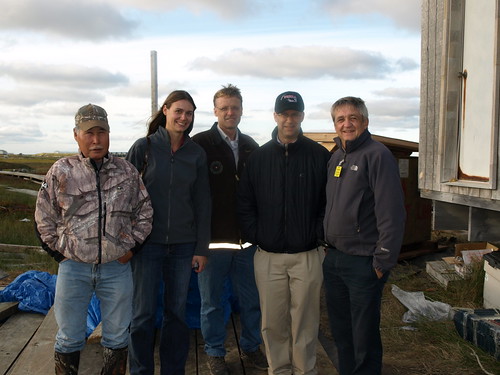
In what was some of the most beautiful weather Southwest Alaska had seen recently, USDA Administrator Jonathan Adelstein joined the USDA-Rural Development Alaska team to tour several rural communities including Manokotak, New Stuyahok, Kasigluk and Kwigillingok and Pitkas Point. The site tours were part of viewing Rural Alaska Village Grant (RAVG) program projects USDA helped fund over the past few years.
Also on board several single engine air charters was Rural Development Alaska State Director Jim Nordlund. When asked about the significance of the RAVG grants, Nordlund said, “Grants from USDA Rural Development will provide, among other much needed system restorations, the remaining funding required for final construction phase of the sanitation facilities improvements in New Kasigluk; install flush tank and haul systems in 37 homes in Kwigillingok and construct a wastewater collection, treatment and disposal system in Pitkas Point.”
Many of the villages are more than a hundred miles from the nearest hub, Bethel. Currently, only half of the community of Kwigillingok has plumbing in their homes. The others still haul potable water and use honey buckets to dispose of their waste. Funding from RAVG will install flush tank and haul systems in 37 homes. Additionally, access boardwalks will be installed to ensure access to each system for pumping.
Matt Dixon is the Vice President of Operations for the Division of Environmental Health and Engineering at the Alaska Native Tribal Health Consortium (ANTHC) and will be touring these rural communities with USDA/RD. "The recent funding provided by USDA, Rural Development, through the Rural Alaska Village Grant (RAVG) program, including a match from the state of Alaska, will help us to make significant progress on improving the health status of Alaska Natives, including providing lasting solutions to promote healthy communities. It has allowed planning and construction of water and sewer facilities in more than 15 communities ranging in location from the Yukon Kuskokwim River Delta, to northwest Alaska, to the southeast panhandle. We expect a significant reduction in dire sanitation conditions, and a corresponding community health benefit, as a result of the funding provided.” Dixon said.
